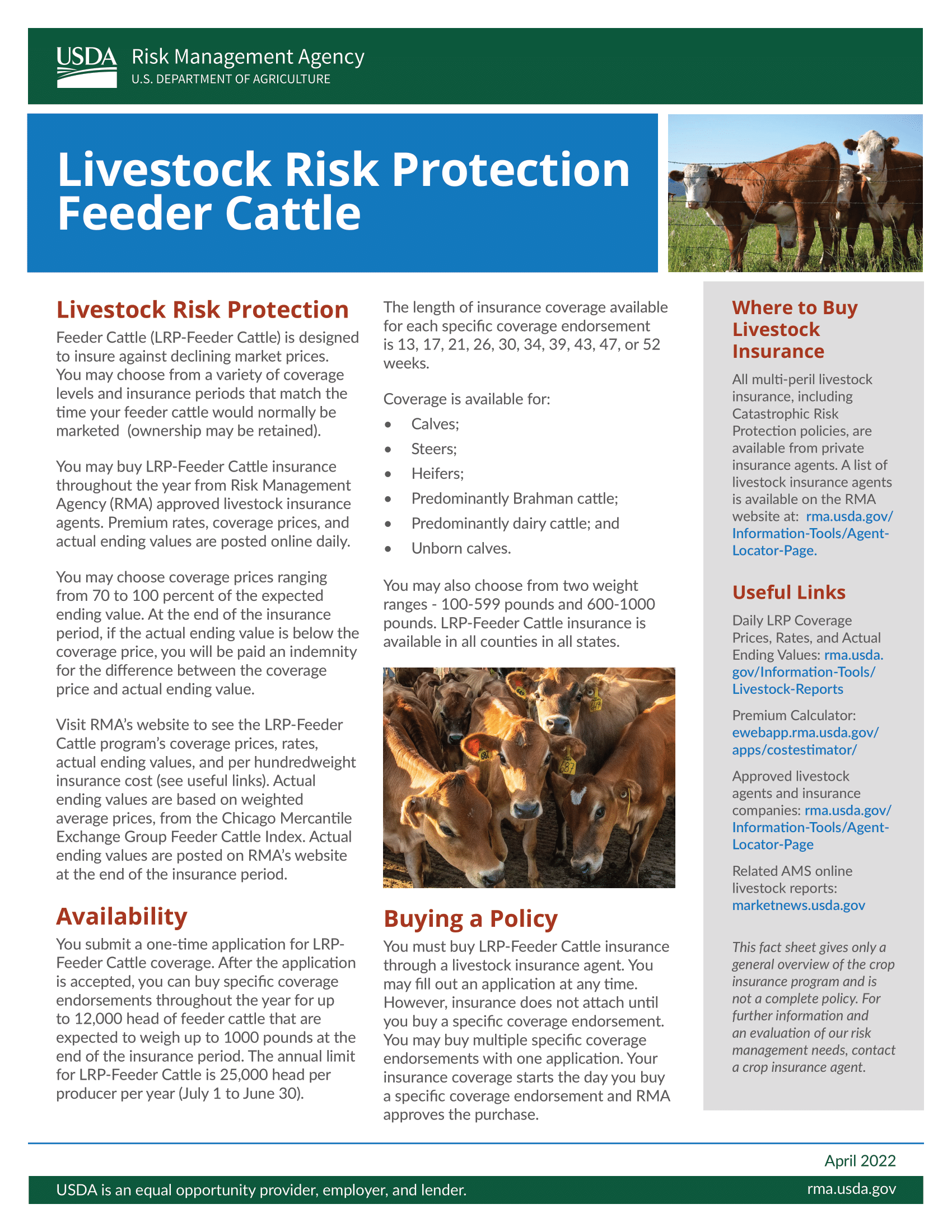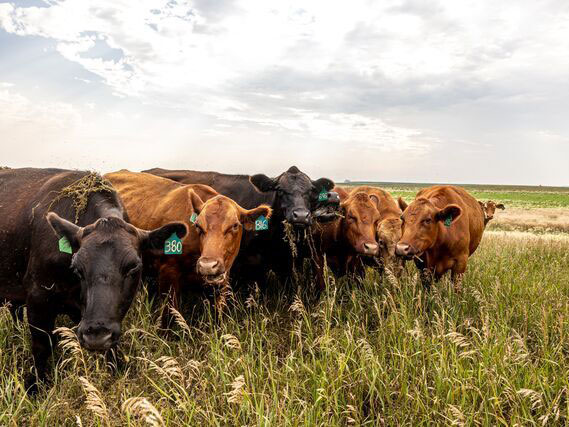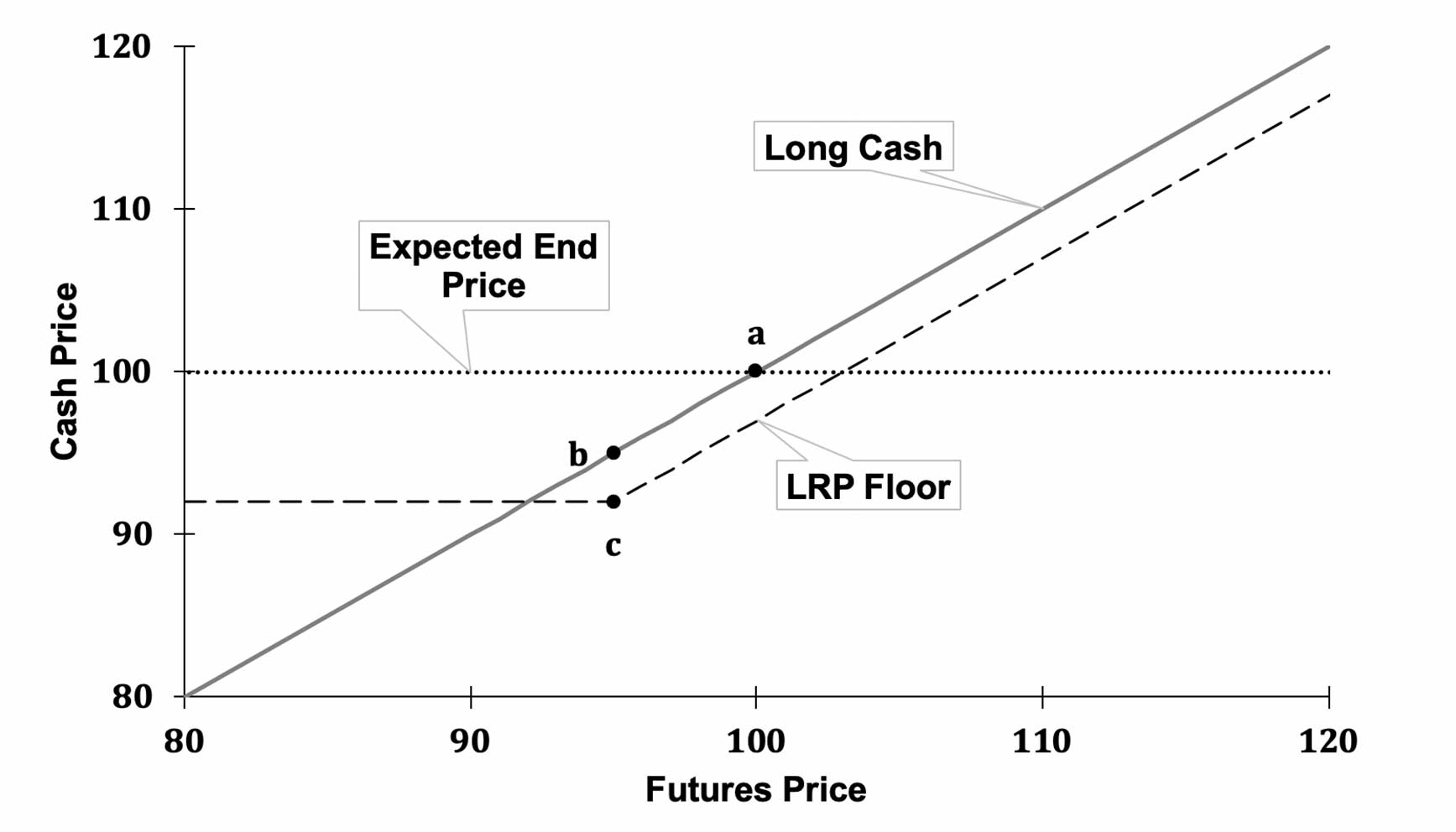Bagley Risk Management Solutions: Your Guard Versus Unpredictability
Bagley Risk Management Solutions: Your Guard Versus Unpredictability
Blog Article
Recognizing Livestock Risk Protection (LRP) Insurance Coverage: A Comprehensive Guide
Browsing the world of livestock risk defense (LRP) insurance can be a complicated endeavor for many in the farming sector. This sort of insurance uses a safeguard versus market fluctuations and unpredicted situations that can impact livestock manufacturers. By understanding the ins and outs of LRP insurance, producers can make enlightened decisions that might safeguard their operations from monetary threats. From exactly how LRP insurance policy functions to the different coverage alternatives offered, there is much to reveal in this extensive overview that could potentially form the method animals producers approach danger monitoring in their businesses.

Just How LRP Insurance Policy Works
Periodically, recognizing the mechanics of Animals Risk Security (LRP) insurance policy can be intricate, yet damaging down just how it functions can provide clarity for breeders and farmers. LRP insurance coverage is a danger administration tool developed to secure animals manufacturers versus unforeseen cost decreases. It's crucial to keep in mind that LRP insurance coverage is not an earnings guarantee; instead, it concentrates only on rate risk protection.
Eligibility and Protection Options

When it involves coverage options, LRP insurance policy uses manufacturers the flexibility to select the insurance coverage degree, coverage period, and endorsements that finest fit their danger monitoring needs. Coverage levels commonly vary from 70% to 100% of the anticipated ending worth of the insured animals. Producers can likewise choose protection durations that straighten with their manufacturing cycle, whether they are guaranteeing feeder livestock, fed cattle, swine, or lamb. Recommendations such as rate threat defense can further customize protection to shield versus adverse market changes. By comprehending the eligibility requirements and protection choices offered, livestock producers can make informed choices to take care of threat effectively.
Pros and Cons of LRP Insurance Coverage
When assessing Animals Risk Security (LRP) insurance, it is vital for livestock producers to weigh the benefits and negative aspects inherent in this danger management device.

One of the main advantages of LRP insurance policy is its capacity to provide protection against a decrease in animals costs. Furthermore, LRP insurance policy provides a degree of versatility, allowing manufacturers to customize protection degrees and plan periods to suit their specific needs.
However, there are also some drawbacks to consider. One constraint of LRP insurance is that it does not protect versus all kinds of risks, such as disease episodes or all-natural catastrophes. Costs can occasionally be pricey, specifically for manufacturers with big livestock herds. It is crucial for manufacturers to meticulously analyze their individual threat direct exposure and monetary situation to determine if LRP insurance policy is the ideal risk monitoring device for their operation.
Understanding LRP Insurance Coverage Premiums

Tips for Making The Most Of LRP Perks
Maximizing the benefits of Livestock Threat Defense (LRP) insurance coverage calls for tactical planning and positive threat management - Bagley Risk Management. To make the most of your LRP insurance coverage, consider the complying with suggestions:
Routinely Examine Market Problems: Keep informed regarding market fads and cost fluctuations in the site here livestock sector. By checking these elements, you can make informed choices about when to purchase LRP coverage to protect against possible losses.
Set Realistic Insurance Coverage Degrees: internet When picking insurance coverage degrees, consider your production prices, market value of livestock, and potential threats - Bagley Risk Management. Establishing practical insurance coverage degrees makes sure that you are properly safeguarded without overpaying for unneeded insurance policy
Expand Your Protection: As opposed to relying solely on LRP insurance, think about expanding your danger monitoring strategies. Integrating LRP with various other danger administration tools such as futures contracts or choices can offer extensive coverage versus market uncertainties.
Testimonial and Change Coverage Regularly: As market problems alter, periodically review your LRP protection to ensure it straightens with your present risk direct exposure. Readjusting protection degrees and timing of acquisitions can help maximize your threat protection approach. By adhering to these suggestions, you can take full advantage of the benefits of LRP insurance policy and protect your animals operation versus unforeseen dangers.
Conclusion
Finally, livestock risk defense (LRP) insurance is a beneficial tool for farmers to handle the economic risks connected with their animals operations. By comprehending how LRP works, qualification and insurance coverage options, in addition to the pros and cons of this insurance coverage, farmers can make informed choices to protect their livelihoods. By meticulously thinking about LRP costs and applying methods to optimize advantages, farmers can mitigate possible losses and make sure the sustainability of their operations.
Animals producers interested in obtaining Livestock Danger Security (LRP) insurance policy can explore an array of eligibility standards and coverage options tailored to their certain livestock operations.When it comes to protection options, LRP insurance uses manufacturers the flexibility to choose the coverage level, insurance coverage duration, and recommendations that ideal match their danger administration requirements.To comprehend the ins and outs of Animals Threat Defense (LRP) insurance policy totally, understanding the read here elements influencing LRP insurance policy costs is vital. LRP insurance premiums are identified by numerous elements, consisting of the protection degree selected, the anticipated rate of livestock at the end of the coverage duration, the type of livestock being guaranteed, and the length of the insurance coverage duration.Evaluation and Adjust Insurance Coverage Routinely: As market conditions transform, regularly examine your LRP protection to ensure it aligns with your existing danger exposure.
Report this page